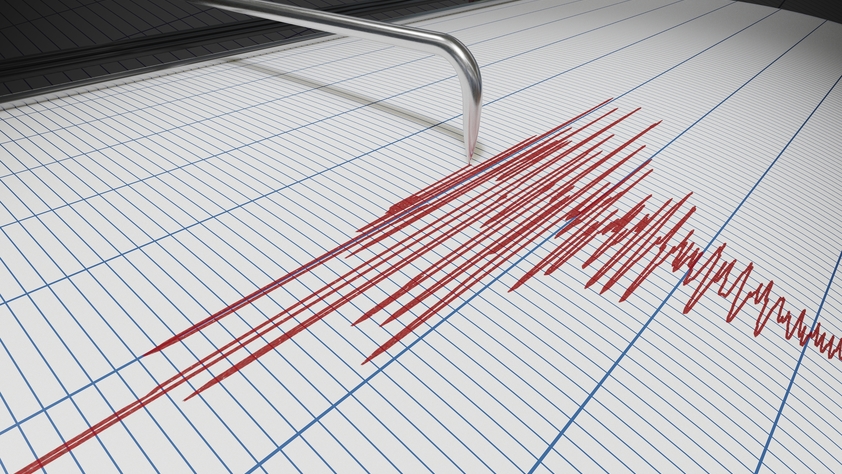As Californians were nestled in bed during the early hours of the morning, the Northridge Earthquake erupted throughout the west San Fernando Valley at 4:31 a.m. on January 17, 1994. A magnitude 6.7 quake caused by the sudden rupture of a previously undocumented blind thrust fault woke thousands of Angelenos, driving the City of Angels into a nightmarish frenzy.
The nature of earthquakes is that they strike when least expected and during that brief ripple in time, life is at a standstill. Once the ground ceases the tumultuous process of uplifting, twisting and eroding, you are left to make sense of the damage.
By the time the sun began to rise, the impact of the Northridge Earthquake was incalculable. Portions of the Santa Monica freeway were damaged, cars were discovered among rubble from the collapse of Interstate-5, a total of 466 fires occurred that Monday (some from the eruption of natural gas mains and valves), and structural damage ranging from apartment buildings to historic structures like the Los Angeles Memorial Coliseum were beyond apparent. The quake killed more than 60, injured more than 9,000, and caused damage amounting to over $20 billion.
Through coordinated response efforts, the City of Los Angeles quickly began to establish shelters, provide clean water, assist with traffic jams, restore power, normalcy and life.
Here we are, twenty-six years later and the City continues to hold lessons learned from the Northridge Earthquake in high esteem. By maintaining a Local Hazard Mitigation Plan that outlines earthquake hazards, we have identified specific projects to mitigate or lessen the effects of the impact an earthquake can make. In addition, each City department is required to develop and maintain a Department Emergency Plan that outlines and dictates department-specific roles and responsibilities to a variety of hazards in an “all hazards” approach. These Department Emergency Plans must meet National Incident Management System (NIMS) criteria as well as standards outlined by the City’s Emergency Management Department (EMD).
The Federal Emergency Management Agency places California in the “very high risk” category for earthquakes. The U.S. Geological Survey (USGS) is the leading agency that provides the public and policymakers with a clear understanding of natural hazards and provides comprehensive real-time earthquake monitoring. The many fault systems running throughout the Los Angeles area can lead to earthquakes of all types and sizes. Many of the buildings have been retrofitted to withstand severe shaking, but one can still face many hazards and dangers.
“Southern California has about 10,000 earthquakes each year, though most are so small that they are never felt,” says Aram Sahakian, General Manager of the City of Los Angeles Emergency Management Department. “It may sound cliché because it is repeated so often, but the phrase, the ‘big one is on the way’ is a rally cry. I encourage you to make the necessary precautions today, practice drills and plan ahead. This will instill confidence that you and your family need to stay safe when the earth shakes.”
The Federal Emergency Management Agency places California in the “very high risk” category for earthquakes. The U.S. Geological Survey (USGS) is the leading agency that provides the public and policymakers with a clear understanding of natural hazards and provides comprehensive real-time earthquake monitoring. The many fault systems running throughout the Los Angeles area can lead to earthquakes of all types and sizes. Many of the buildings have been retrofitted to withstand severe shaking, but you could still face many hazards and dangers.
“The Northridge Earthquake was a tragic moment in our history, with too many lives lost and damage that took many years to repair,” said Mark Benthien, Associate Director of the Southern California Earthquake Center (SCEC) at USC and Executive Director of the statewide Earthquake Country Alliance (ECA). “However, we also learned many things from the disaster: how vulnerable certain types of buildings are (many of which have now been retrofitted or will be in the next decade); how being trained to help our neighbors is essential (through CERT and other programs); and how unknown faults beneath our cities are a significant threat in addition to the “Big One” we anticipate on the San Andreas (which led to studies that identified similar faults). SCEC and the many ECA partner organizations and leaders work to communicate these and other lessons, through activities such as the Great California ShakeOut, preparedness messaging such as the Seven Steps to Earthquake Safety, and guidance on what to do when an Earthquake Early Warning (including ShakeAlertLA) is received.”
In commemoration of this historical natural disaster, we encourage you to click on one of the links in this article to get started or simply to learn more about earthquakes. Preparation begins with you!
